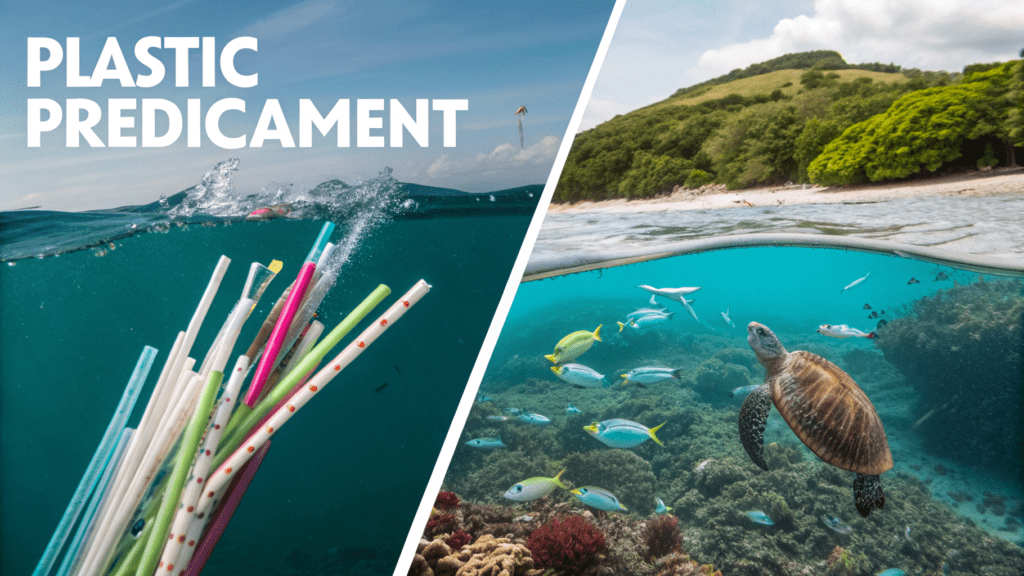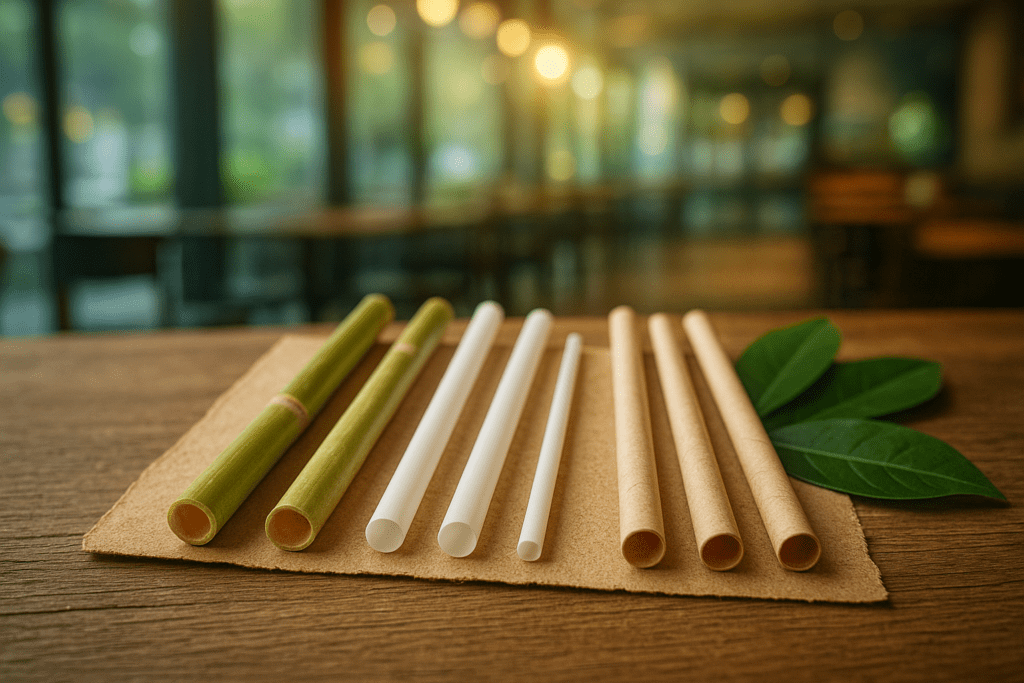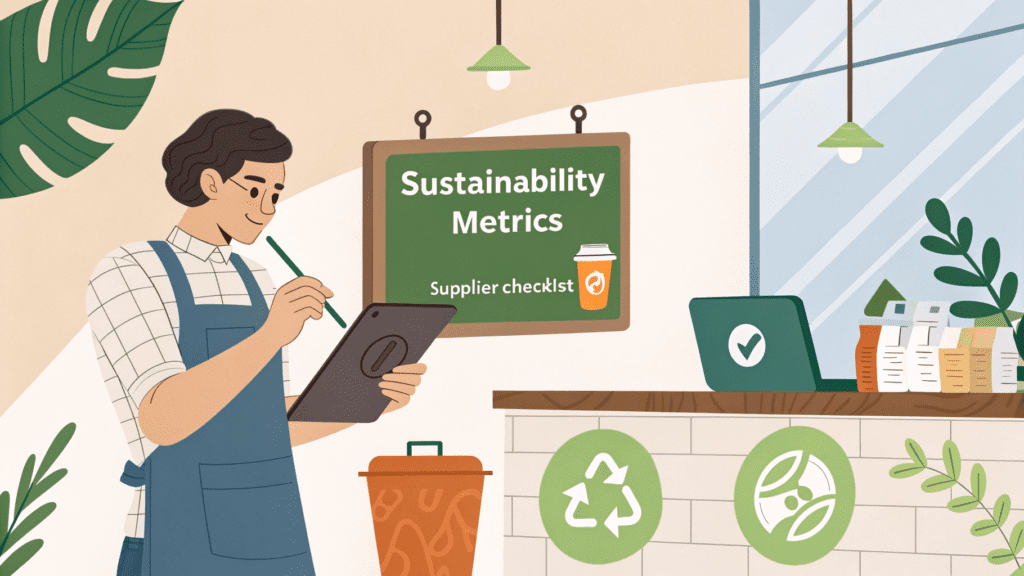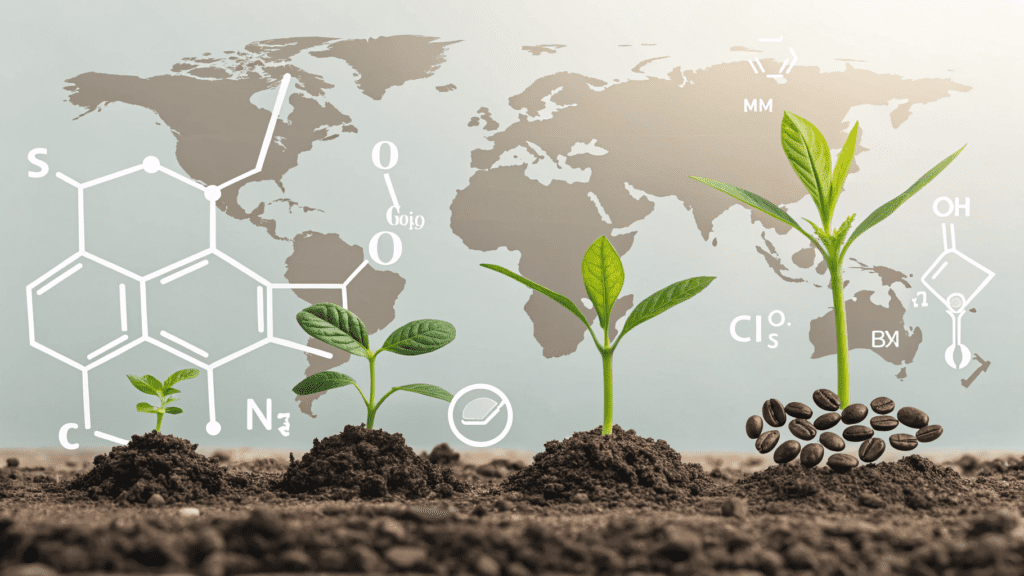
I. Navigating the New Era of Sustainable Sip Solutions
The plastic predicament is undeniable: every year, billions of plastic straws contribute to an escalating crisis of pollution, impacting our oceans and ecosystems. Beyond the environmental damage, consumers are increasingly aware and concerned, actively seeking sustainable alternatives and demanding businesses take responsibility. Traditional plastic straws, once symbols of convenience, are now liabilities, and ignoring this shift is no longer a viable option.
The journey towards sustainable sipping has evolved significantly. From ancient Mesopotamian reeds and 16th-century Argentinian metal “bombillas”, we moved to Marvin Stone’s 1888 patent for the modern paper straw and Joseph Friedman’s flexible straw in 1937. The mid-20th century saw the reign of inexpensive, durable plastic straws. However, post-2000s, growing environmental awareness led to bans and a surge in demand for sustainable alternatives, making evolving environmental consciousness and regulatory pressures a current imperative for businesses.
Compostable straws represent a significant step towards environmental responsibility, designed to break down naturally and reduce the harmful impact of single-use plastics. Among the leading eco-friendly materials are sugarcane and PHA (Polyhydroxyalkanoates), both offering unique benefits for businesses.

II. Unpacking the Best Choices for Your Business
When considering compostable straws, sugarcane and PHA stand out as gold standards for B2B sustainable solutions.
Sugarcane Straws: Repurposing Waste for a Better Sip
- Materiaal: Made from bagasse, the fibrous byproduct of sugarcane juice extraction, effectively repurposing agricultural waste. Some versions are 100% PLA-free.
- Manufacturing: Involves collection, drying, grinding, pelletizing, molding/extrusion, and finishing, often with heat-treatment for durability.
- Voordelen:
- Utilizes agricultural waste, contributing to a circular economy.
- Home composteerbaar (typically 3-6 months).
- Excellent durability, preventing sogginess for hours, and withstanding temperatures up to 90°C (194°F).
- Neutrale smaak and non-toxic, free from BPA and PFAS.
PHA Straws: The Plastic-Like Bioplastic Solution
- Materiaal: Composed of bio-based polymers produced by microorganisms fermenting renewable resources like sugarcane molasses or plant-based oils (e.g., canola oil). They are a bio-based polymer mimicking traditional plastic.
- Manufacturing: Involves microbial fermentation, extraction/purification, pelletization, and extrusion.
- Voordelen:
- Highly biodegradable in various environments, including soil, home compost, industrial compost, and marine environments.
- Offers comparable look, feel, and performance to traditional plastic.
- Superior temperature resistance (up to 100°C / 212°F).
- No microplastics and is FDA-approved and non-toxic.

Choosing Your Green Edge: A Comparison
| Functie | Rietjes van suikerriet | PHA-rietjes | Papieren rietjes |
|---|---|---|---|
| Primary Material | Bagasse (sugarcane fiber) | Fermented plant sugars/oils | Wood pulp/paper |
| Composition | 100% Plant-based, often PLA-free, PFAS-free | 100% Bio-based plastic, PFAS-free, BPA-free | Paper, potentially PFAS-coated |
| Durability | Excellent (soggy-free for hours) | Excellent (like traditional plastic) | Prone to sogginess, can affect taste |
| Hot Beverage Tol. | Up to 90°C | Up to 100°C (superior) | Under 60°C (uncoated) |
| Composteerbaarheid | Home & Industrial (90-180 days) | Home, Industrial, Soil, Marine | Varies (often industrial) |
| Taste/Odor | Neutral | Neutral (like plastic) | Can impart “papery” taste |
| Kosten | Cost-effective (especially in bulk) | Higher initial cost, but improving | Can be 10x plastic |
| Environmental Foot. | Low, utilizes agricultural waste (circular) | Low, reduced GHG vs. plastic, no microplastics | Higher (some production, PFAS concerns) |
Market Momentum & Regulatory Landscape
The global eco-friendly straws market is not just a trend; it’s a rapidly expanding sector, estimated at $12.3 billion in 2025 and projected to reach $25.1 billion by 2035. This growth is fueled by major companies like Starbucks and McDonald’s publicly committing to phasing out plastic straws.
Navigating the regulatory landscape requires careful attention:
- Verenigde Staten: Features a patchwork of state and local regulations, with no single federal ban. While a federal executive order (in the 2025 context) aimed to disfavor paper and plastic, states like California, Maine, and New York continue to enforce “straws upon request” or outright bans. Some cities, like San Francisco, have even banned “compostable plastic” (PLA) if not truly non-plastic, and PFAS presence in some paper straws remains a concern.
- Europese Unie: Implements a unified and stringent Single-Use Plastics Directive (SUPD), banning plastic straws (effective July 2021), regardless of “bio-sourced” or “biodegradable” labels. This includes materials like PLA and PHA, which are classified as plastics due to their industrial fermentation process, despite their biodegradability. The EU also emphasizes strict definitions of “biodegradable”, focusing on true environmental degradation beyond just industrial compostability. Producers are also responsible for waste management and clean-up costs under EPR (Extended Producer Responsibility) schemes.

III. Empowering Your Sustainable Sourcing Strategy
Switching to sustainable straws goes beyond mere compliance; it drives significant business value:
- Enhance Brand Reputation: Over 70% of consumers prefer sustainable brands, boosting your image and fostering loyalty.
- Future-Proof Operations: Proactive compliance with evolving regulations helps avoid penalties and ensures market access.
- Improve Customer Experience: Durable, taste-neutral straws eliminate common complaints associated with soggy paper.
- Contribute to a Circular Economy: Utilizing agricultural byproducts and truly compostable materials reduces waste and carbon footprint.
Your B2B Supplier Evaluation Checklist:
When selecting a supplier for sugarcane or PHA straws, ensure you cover these critical points:
- Product Quality & Consistency: Verify genuine material composition and request certifications such as PLA-Free, PFAS-Free, BPA-Free, and FDA-approved. Conduct your own in-house durability tests.
- Certifications & Compliance: Look for reputable certifications like BPI, TÜV OK Compost INDUSTRIAL/HOME, DIN CERTCO, ASTM D6400/D6868, USDA BioPreferred, and ABA Seeding Mark.
- Manufacturing & Sustainability Practices: Inquire about the supplier’s energy, water, and waste management practices in production, and verify ethical sourcing of raw materials.
- Supply Chain Reliability & Logistics: Assess lead times, Minimum Order Quantities (MOQs), delivery frequency, and packaging efficiency.
- Cost & Value Proposition: Compare competitive pricing and demand transparent pricing. Consider the Total Cost of Ownership (TCO), including potential waste savings.
- Customer Service & Support: Evaluate responsiveness, inquire about dedicated account management, and understand return/issue resolution policies.
- Reputation & References: Research industry standing, awards, testimonials, and request client references from similar businesses.
Spotlight: Momoio Sugarcane Straws PLA-Free are highlighted as a top choice for B2B, being 100% natural plant-based, biodegradable, garden compostable, free from chemicals/toxins/plastic, soggy-free up to 24 hours, and suitable for both hot (90°C) and cold drinks, all at an affordable price.

IV. Future Outlook: Beyond 2025 – Continuous Innovation & Global Impact
The future of compostable straws is marked by continuous innovation:
- PHA Production Advancements: Expect genetic engineering for higher-yielding microbial strains and the use of new substrates like food waste and cyanobacteria.
- Novel Plant-Based Materials: Research is expanding to include seaweed-based, rice straws, coffee ground straws, coconut straws, and cellulose acetate.
- Enhanced Performance: Innovations will bring improved water-resistant coatings and designs for aesthetics and user appeal.
The global biodegradable straw market is projected for robust growth, with a 23.2% CAGR to 2031. Significant regional growth is expected in North America (40%+ market share, 21.4% CAGR) and Europe (30%+ market share, 21.7% CAGR), largely driven by regulation and consumer demand.
This reflects a broader sustainability movement in hospitality, where hotels are moving towards carbon neutrality, integrating AI for resource management, sustainable design, and circular economy initiatives (e.g., refillable amenities, food waste valorization). Sustainability is shifting from a “marketing add-on” to a “cost-avoidance strategy”, driving efficiency and resilience.
Take the Next Step Towards a Greener Future.
It’s time to evaluate your current straw usage and its environmental impact. By choosing cutting-edge compostable solutions like sugarcane and PHA straws, you’re not just complying with regulations; you’re gaining a competitive advantage and demonstrating a powerful commitment to a sustainable future.
Contact Momoio today to request samples of their innovative biodegradable straws and receive a personalized consultation. Join the growing number of businesses leading the charge in sustainable hospitality.






